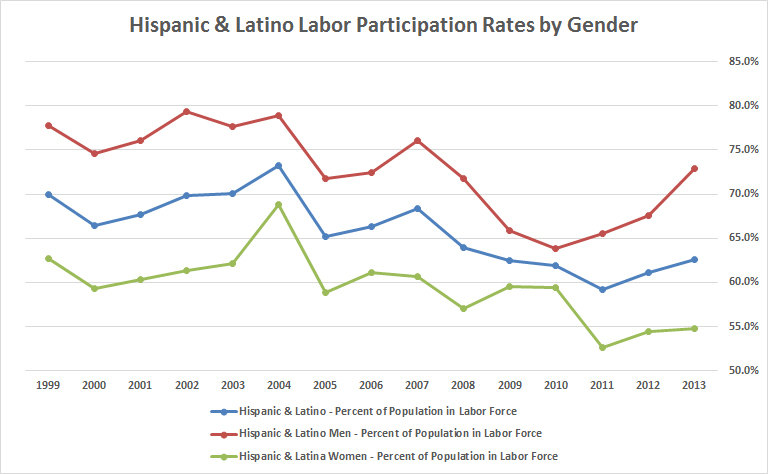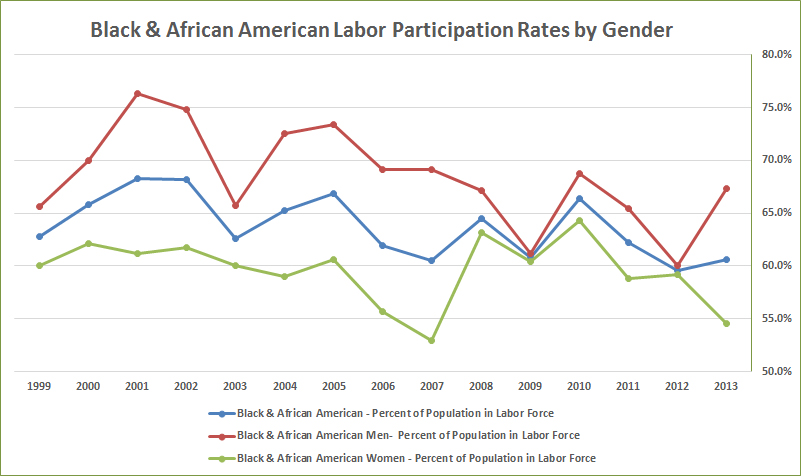A Challenge to Economic Freedom: Declining Labor Participation
Even with lower unemployment rates in Massachusetts and the U.S., the real-world economy continues to feel awfully sluggish — and for good reason.
The fact is that the unemployment rate doesn’t tell the whole story. Strictly defined as the percentage of the population who are out of work and actively seeking employment, this metric provides a very narrow lens through which to evaluate labor market performance. A look at labor participation rates — the labor force as a percentage of the civilian non-institutional population — helps paint a more accurate picture.
As the Bureau of Labor Statistics reported last Friday, the civilian labor force participation rate dropped to an historic low of 62.7 percent in September — a grim reminder that we are still in the midst of a sluggish economic recovery. Across the country, women have been hardest hit by labor market conditions. Massachusetts is no exception to this trend.
A Challenge to Economic Freedom: Declining Labor Participation
The Impact on Women
In the commonwealth, women have been particularly hard hit. In 1999, about 63 percent of Hispanic and Latina women were either employed or looking for work. By 2013, that number had dropped to around 55 percent. There were signs of improvement from 2008 through 2010, but the rate for Hispanic and Latina women has failed to pick up steam the last few years. The rate for Hispanic and Latina women has hovered just below 55 percent since 2012. (View the chart below, or click here to view the data as a table.)
The trend is different among the commonwealth’s Black and African-American women. By 2010, their labor participation rate had risen above 64 percent, up from 60 percent in 1999. But it has since plummeted, to less than 55 percent last year. (View the chart below, or click here to view the data as a table.)
The drop has been less precipitous among white women, from just over 63 percent in 1999 to slightly under 61 percent last year. Since 2008, labor participation for white women has remained fairly stable within an approximate range of +/- 3 percent. (View the chart below, or click here to view the data as a table.)
The Impact on Men
Men have also been adversely impacted, though not as dramatically. The labor participation rate among Hispanic and Latino men saw a steep drop from 1999 to 2010 (declining from 78 to 64 percent); since that time the labor participation rate has risen to 73 percent.
The labor participation rate for Black and African American men increased from 66 percent in 1999 to a high of almost 75 percent in 2002. Thereafter, it fell to 60 percent in 2012 before rising significantly to above 67 percent last year.
Labor participation among white men fell from just under 76 percent in 1999 to less than 70 percent last year.
Considerations
The ability to participate in the economy is a core element of any individual’s exercise of freedom. Men have fared better than women across racial and ethnic categories. Among women, minorities have been hardest hit.
Increasing educational opportunity has always been a key platform for civil rights leaders seeking economic freedom for minorities. The gold standard for providing a strong educational foundation to build economic security has been charter schools, which dramatically outperform their district counterparts and serve a disproportionate number of poor and minority students.
As documented in a report from the Stanford University Center for Research and Education Outcomes (CREDO) and a July 2014 report from Pioneer, charter students in Massachusetts covered an additional month-and-a-half’s worth of learning in English and two-and-a-half months in math over the course of a school year. Furthermore, in-state charter students brought down the low-income achievement gap to just two points on the Massachusetts Comprehensive Assessment System (MCAS) in 2013.
Reinforcing this picture of improving performance is information released by the MA Charter Public School Association showing African-American students enrolled at charter public schools scored 17.6 points and 19.6 points higher in proficient and advanced categories in English and Math in 2013 compared to their public school counterparts, respectively. For Hispanic children, these scores were higher by 20.8 points in English and 22.5 points in Math.
In spite of this demonstrated success, we’ve seen a lack of willingness among Massachusetts policymakers to lift the cap on charters and close the achievement gap.
These officials’ dismissal of the success and effectiveness of the charter school model is in many ways a refusal to address damaging economic inequalities that stand in the way of progress for these demographic groups.
Charter schools are not the only arrow we can pull from the quiver. We should, for example, consider summer intensive academic programs, provide greater autonomy and insist on greater accountability in urban vocational-technical schools like Boston’s Madison Park, and both fund the METCO program at a high level and expand it to serve more socio-economically disadvantaged students.
Note: All data used in this report was drawn from the Bureau of Labor Statistics and compiled by the Liberty Foundation.






